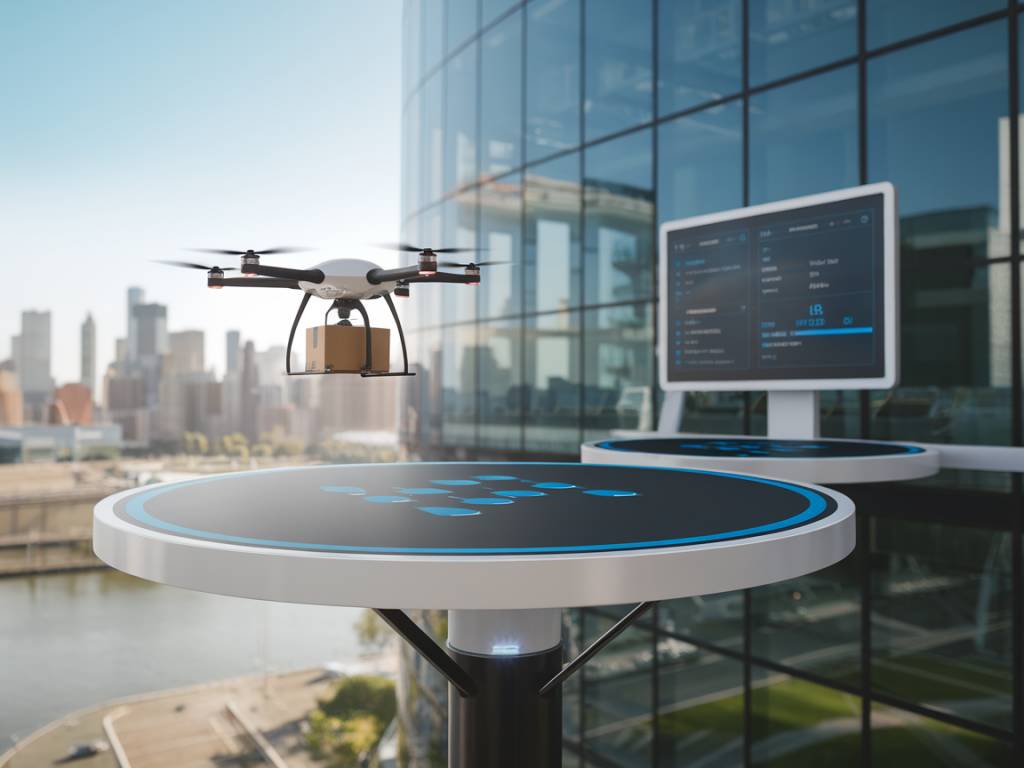Introduction to 5G in Connected Logistics Systems
These days, the logistics and transportation industry is undergoing a rapid transformation, and much of this progress can be attributed to the advent of advanced technologies. Among these technological advancements, the introduction of the fifth generation of wireless technology, known as 5G, stands out. In this article, we will delve into how 5G is enhancing connected logistics systems and reshaping the landscape of logistics and transportation.
What is 5G Technology?
5G technology represents the latest iteration of mobile internet connectivity, offering faster speeds and more reliable connections on smartphones, tablets, and other mobile devices. But it’s not just about speed; 5G is designed to provide ultra-reliable low-latency communication (URLLC), massive machine-type communication (mMTC), and enhanced mobile broadband (eMBB). These features make 5G a game-changer in a myriad of applications, particularly in the logistics sector.
Improved Real-Time Tracking and Monitoring
One of the biggest advantages 5G brings to connected logistics systems is enhanced real-time tracking and monitoring capabilities. With 5G’s ultra-low latency and high-speed data transfer, logistics companies can benefit from:
- Instantaneous Updates: Information related to the location and condition of goods can be updated in real-time, allowing for more accurate tracking.
- Enhanced Visibility: Companies gain unprecedented visibility into their supply chains, enabling quicker responses to disruptions and delays.
- Predictive Analytics: Real-time data facilitates advanced analytics techniques that can predict potential issues before they occur, allowing for proactive management.
Enhanced Autonomous Vehicle Capabilities
Autonomous vehicles (AVs) are poised to be a cornerstone of future logistics systems, and 5G plays a crucial role in their development and deployment. Some noteworthy impacts of 5G on AV capabilities include:
- Better Coordination: 5G allows AVs to communicate with each other and traffic infrastructure instantaneously, improving coordination and reducing the risk of accidents.
- Improved Navigation: High-speed data transfer can support complex navigation systems, enabling AVs to make smarter routing decisions in real-time.
- Remote Control: 5G enables operators to take control of vehicles remotely in emergency situations, adding an extra layer of safety and reliability.
Cost Efficiency and Optimization
5G technology also promises cost efficiency and optimization in logistics operations. The deployment of 5G can lead to:
- Reduced Downtime: Real-time monitoring systems minimize the chances of equipment failure, reducing downtime costs.
- Optimized Routes: Advanced analytics powered by real-time data can identify the most efficient routes, saving fuel and reducing greenhouse gas emissions.
- Labor Efficiency: Increased automation and the ability to manage assets in real-time can lead to significant reductions in labor costs.
Enhanced Security and Compliance
Security and compliance are pivotal in logistics, especially when handling sensitive or high-value goods. 5G technology augments these aspects by providing:
- Real-Time Surveillance: Enhanced video surveillance capabilities and instant data transmission can monitor and secure assets more effectively.
- Secure Data Transmission: 5G ensures encrypted, secure communication channels, maintaining data integrity and preventing breaches.
- Regulatory Compliance: Real-time tracking and automated reporting help ensure compliance with various regulations, reducing the risk of legal issues.
Impact on Warehouse Management
Warehousing is another crucial aspect of logistics that benefits significantly from 5G connectivity. Improvements in this area include:
- Robotics and Automation: 5G supports the deployment of advanced robotics, streamlining operations and reducing human error.
- Inventory Management: Real-time data helps in maintaining accurate inventory levels, reducing waste and out-of-stock situations.
- Order Fulfillment: Enhanced connectivity speeds up order processing and fulfillment, leading to improved customer satisfaction.
Challenges and Considerations
While 5G offers numerous benefits, there are also challenges and considerations to bear in mind:
- Infrastructure Costs: Implementing 5G infrastructure can be costly, requiring significant investment.
- Data Privacy: With increased data collection, companies must ensure robust data privacy measures are in place.
- Skill Gap: There is a need for skilled professionals to manage and operate 5G-based systems effectively.
Future Prospects
The future of 5G in connected logistics systems appears promising. As the technology matures, we can expect:
- Broader Adoption: More logistics companies will adopt 5G to stay competitive, driving overall industry growth.
- Integration with AI: The combination of 5G and artificial intelligence will enable smarter, more autonomous logistics solutions.
- Global Connectivity: As 5G networks expand worldwide, cross-border logistics will become more seamless and efficient.
In conclusion, 5G technology represents a transformative force in the realm of connected logistics systems. By offering improved real-time tracking, enhanced autonomous vehicle capabilities, cost efficiency, and robust security, 5G is setting the stage for a brighter and more efficient future in logistics and transportation.



